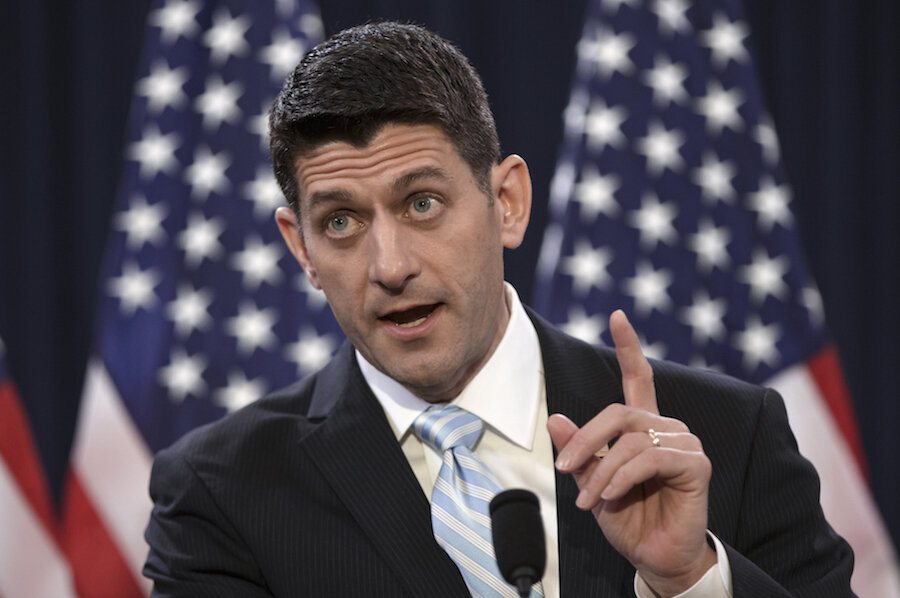Paul Ryan and the 'ridiculous notion' of tax distribution
Loading...
Last week, House Speaker Paul Ryan said in a CNBC interview that the distributional analysis of tax plans done by the Tax Policy Center, the Joint Committee on Taxation, and others is based on the “ridiculous notion” that the effect of tax changes on different income groups is important.
Ryan, who became speaker because he is both a strong partisan and a smart man, cleverly conflates two ideas: By raising the notion of “static distribution,” he describes the growth and distributional effects of tax policy as if they are the same thing. They are not.
Ridiculous Notion
And while it is certainly useful to understand how tax changes affect the overall economy, it is also valuable to know how those proposals affect the after-tax incomes of households across the economic spectrum. It may be somewhat uncomfortable if you’re proposing a tax cut that would distribute trillions of dollars to a handful of high-income households and relatively little to everyone else, but it is useful nonetheless.
Here is what Ryan told John Harwood:
“So I do not like the idea of buying into these distributional tables. What you're talking about is what we call static distribution. It's a ridiculous notion. What it presumes is life in the economy is some fixed pie, and it's not going to change. And it's really up to government to redistribute the slices more equitably. That is not how the world works. That's not how life works. You can shrink or expand the economy, and what we want to maximize is economic growth and upward mobility so that everybody can get a bigger slice of the pie.”
When Harwood cut to the political chase by asking how blue-collar Republican voters would react to candidates who’d skew tax cuts to the highest income households, Ryan replied, “People don't think like that….Bernie Sanders talks about that stuff. That's not who we are.”
In one way, none of this is new. Some have argued for years that distributional analysis is merely “class warfare.” More credibly, others argue that it is not the only story when it comes to tax policy. Good analysis, they say, should start with economic effects. This is Ryan’s “grow the pie” perspective.
Let’s unpack this a bit.
Ryan is right that TPC and others do static distributional analysis, in the sense that we take a snapshot of people’s incomes and don’t look at how they change over time. If we could look over a period of years, we’d be able to see if, say, big tax cuts make everyone richer across the income distribution. That’s what Ryan believes, but making that case is not easy. And researchers who have tried to do this, including Joel Slemrod at the University of Michigan and my TPC colleague Len Burman, have found that the picture over time is not much different than a one-year snapshot.
Tax Changes and Behavior
Of course, it is important to understand how tax changes affect the behavior of individuals and firms. TPC, JCT, and others already include this analysis in their work. For example, TPC assumes that adjusting capital gains tax rates changes investment decisions, and that increasing the Earned Income Credit encourages people to work more. But, at least so far, TPC does not take the next step and try to figure how those individual changes in, say investments or work, affect the whole economy.
Noisy rhetoric aside, most economists also would love to understand how fiscal policy (including spending as well as taxes) affects the overall economy. That’s a key element in the effort to do dynamic scoring of tax changes. But it is important to acknowledge that the modeling tools to do this work are still fairly crude. To make the job even harder, these macroeconomic effects also depend on whether, and how, tax cuts are financed—something lawmakers rarely specify .
By contrast, we’ve been doing distributional analysis for years. TPC has been at it for over a decade, and JCT for much longer. Ryan appears to be saying we should stop because, well, because the results don’t fit with his worldview.
There is plenty of debate among sociologists, political scientists, and economists about how people respond when they believe their neighbor is getting tax breaks they do not. But Ryan doesn’t think the public should even be told how tax proposals would affect people in various income groups.
"We Know What's Best."
Oddly for a conservative, he seems to be arguing people should just trust government on this. In effect, he’s saying, “Let us cut taxes the way we want. The economy will grow and you’ll be happy. You don’t need to know if you get a tax cut of $200 while someone in the top 0.1 percent of the distribution gets a tax cut of $2 million. That’s not important. It will be good for you. We know best.”
That doesn’t seem like very good public policy. And it seems like worse politics at a time when many struggling voters believe they are getting little economic benefit from their government’s fiscal policy.
This article first appeared in TaxVox.





